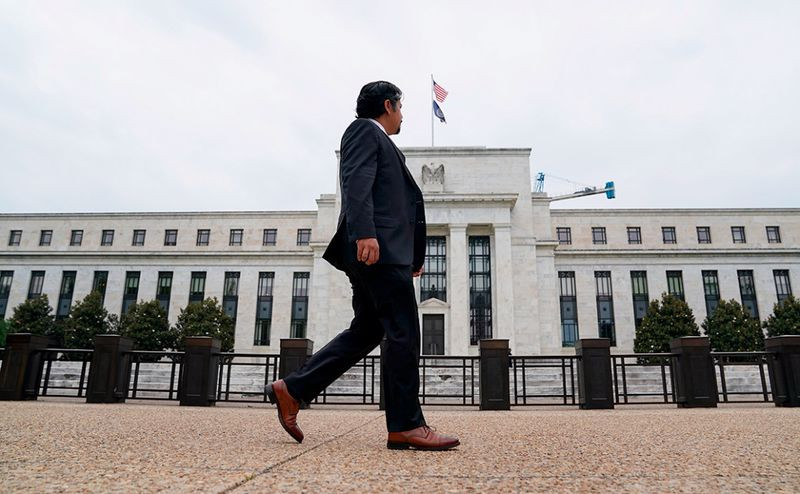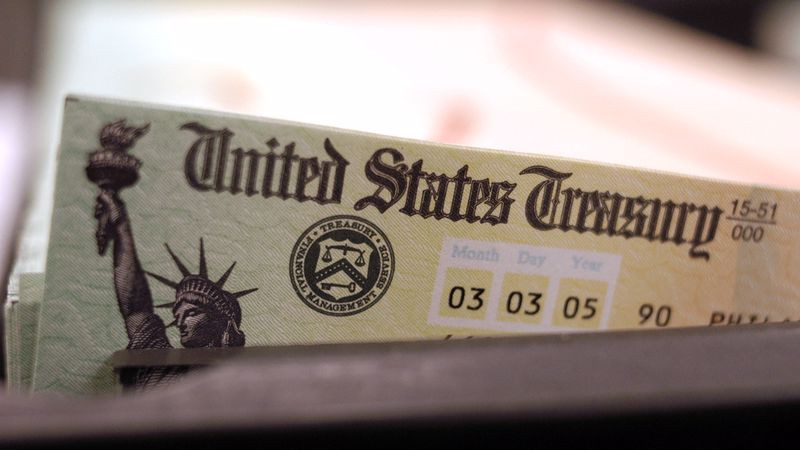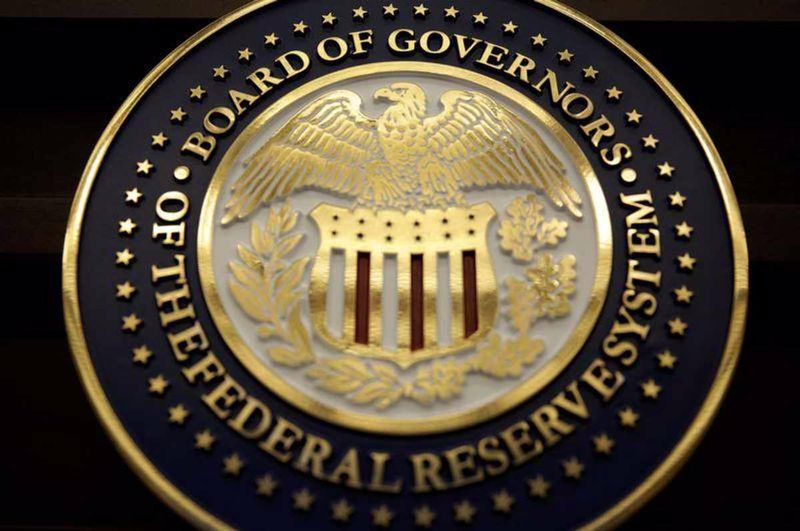
Inflation in the United States, which has soared to 40-year highs, would seem to undermine the purchasing power of the dollar. However, nothing like this happens.
The greenback continues to be popular among investors, as the protracted Russian-Ukrainian conflict, ongoing disruptions in supply chains and a surge in COVID-19 morbidity in China contribute to a decrease in demand for risky assets.
In the absence of significant macroeconomic releases on Monday, the dollar continued to gain strength against its main competitors, testing the resistance in the area of 100.00.
Meanwhile, key US stock indexes ended yesterday's trading with a sharp decline. At the end of the session, the S&P 500 lost almost 1.7%, marking the second day of decline. At the same time, all sectors of the index showed negative dynamics, and it closed under the 200-day moving average, which worsens the short-term technical picture.
The corporate reporting season for the first quarter starts this week in the United States.
"Even if the reporting season in the US shows good profit growth, we doubt that companies will start to revise their own forecasts upwards. Because of this, we expect only a slight increase in the US stock market until the end of the year," Capital Economics analysts said.
Bank of America analysts gave a disappointing forecast for the S&P 500.
They warned that by the end of 2022, the index will fall below the key milestone of 4000.
In 2022, a recession caused by inflation not seen in 40 years will cause a new correction in the stock market, which will enter the bearish zone, BofA said.
The Federal Reserve now wants to curb rising inflation with monetary policy, and this will begin with a revaluation of the stock market, the bank's strategists noted.
The bearish phase for the S&P 500 will officially begin at a drop below the 3800 mark, which is 20% separated from the record peak on January 3.

"The Fed is going to act aggressively. They don't want to be a problem in the midterm elections," SLC Management analysts said, referring to the elections that will take place in the United States in November and will determine whether Republicans will be able to wrest control from Democrats in the Senate and House of Representatives.
"Also, the US central bank does not want to be in a position where it does not control inflation," SLC Management experts said, adding that they expect the Fed to raise the key rate by 50 basis points at each of the next three meetings of the central bank.
A similar forecast is followed in ING.
"Given the clear changes in the official rhetoric of the US central bank and the growing inflationary pressure visible throughout the national economy, we believe that the Fed will raise the interest rate by half a point at the May, June and July policy meetings," they said.
At the same time, analysts noted that it is quite risky to raise interest rates so quickly in an economy accustomed to cheap loans.
"The Fed seems to feel the need to catch up in order to regain control over inflation and inflation expectations. However, the rapid pace of aggressive interest rate hikes increases the risk of a political error, which may be enough to bring the economy into recession," ING said.
The fear of a recession has already crept into the US bond market.
Recently, the yield spread of 2- and 10-year US Treasuries briefly went into the red zone, indicating an inversion, which experts consider a wake-up call for the economy in general and the bond market in particular.
In case of inversion, the market expects a negative scenario: less economic growth and deterioration of financial conditions, including a rate hike.
According to the results of a study conducted by the San Francisco Federal Reserve in 2018, nine recessions recorded in the United States since 1955 to the present day coincide with the inversion of the bond yield curve for the previous 6-24 months. Although this rule is not 100% true, over the past 63 years there has been only one false alarm.
However, the problem arises with an inverted yield curve that persists for a long time, Bankinter analysts say.

The yield spread between 2- and 10-year treasuries, which is now +27 basis points versus -8 basis points, which was observed quite recently – on April 4, is still far from those stressful levels (-10 and -30 basis points) that were observed in the 1970s and 80s.
At the same time, the Fed's bond purchases distort the movement of the curve, experts say.
According to Nextep Finance strategists, when we talk about the inversion of the yield curve, it is necessary to take into account that it is primarily an indicator of expectations, and not a physical law or mathematical rule, which means that even if traders foresee a higher probability of recession, they may be wrong.
"According to the Conference Board estimates, the American economy can grow up to 3% regardless of anti-Russian sanctions. And we will add up to 2.5% more growth if the Fed presses the monetary brakes too hard. In addition, do not forget that the curve ceases to be flat as the long-term rate increases. Just a few days ago, a statement by one of the FOMC members caused a rapid rise in the yield of 10-year US bonds, and the smoothing of the curve disappeared. To serve as a reliable tool, its flattening should be maintained for a long time," Nextep Finance said.
Therefore, it makes no sense to risk long positions on the stock market? The flattening of the curve can be explained by the fact that the short-term rate is growing stronger than the long-term one, but stock valuations suffer, especially in long positions, and this does not compensate for the risk.
A sharp drop in the key Wall Street indices provided support for the greenback in the afternoon on Monday and forced the EUR/USD pair to turn down. The increase in US Treasury bond yields, in addition to the unfavorable market environment, served as a tailwind for the dollar.
The day before, the yield of 10-year treasuries rose to 2.779% from 2.713% recorded on Friday.
The steadily growing yield of US government bonds over the past two months makes the US currency more profitable to buy.
By announcing a seven-fold increase in the key rate in March, simultaneously with the termination of asset purchases and the transition to the sale of government bonds, the US central bank practically guaranteed traders the possibility of risk-free dollar investments in treasuries, the rate on which will grow, and the inflation losses will be compensated by the strengthening of the USD exchange rate.

Analysts at Commonwealth Bank of Australia believe that very high inflation in the US will spur expectations of an aggressive tightening of the Fed's monetary policy. And this is positive for the dollar.
"We expect that the demand for the US currency will continue, and it will rise to 103 points in the coming months," they said.
The USD index was last seen near this level on March 20, 2020.
"The greenback continues to receive support due to the active position of the Fed, but many expectations regarding the monetary policy of the central bank have already been embedded in prices, so it will probably be increasingly difficult for the US currency to grow further," Commerzbank said.
The USD index rose to 100.20 on Tuesday, updating a near two-year high before dropping just below 100.00.
All attention today is focused on the consumer price index in the United States.
According to the US Department of Labor, inflation in the country accelerated by 8.5% in annual terms last month after rising by 7.9% in February. The value of the indicator was the highest since December 1981.
"Although it seems extreme, such figures should support market expectations that the Fed will bring the discount rate to 2.50% by the end of the year. Therefore, we see no reason why the USD index cannot continue moving towards 100.80-101.00," ING economists said.
Today's release is especially important for the reason that this is the last release of CPI data before the May meeting of the US central bank.
However, the report did not provide significant support to the dollar, since the markets have already taken into account the 90% probability of a 0.5% increase in the federal funds rate in May.
In anticipation of confirmation of the acceleration of inflation in the United States to the highest in more than four decades, the key Wall Street indices symbolically declined, and after the release of the March CPI data, they completely went into plus.
Given the fact that most market participants predict more than one Fed rate hike by 50 basis points at once, the rapid compression of liquidity caused by such a development event will be negative for stock indicators.
Experts expect the US central bank to aggressively tighten policy, but they do not believe that the central bank will be able to bring down inflation to target values before 2024.

Cleveland Fed President Loretta Mester believes that inflation will remain high this year and next, even though the Fed is steadily moving to lower the rate of price growth.
"The Fed's interest rate hike and other actions will help reduce excess demand, which outstrips limited supply, and reduce price pressure to the target level of 2%. I think it will take some time. Inflation will remain above 2% this year and even next year. But the trajectory will move down," she said.
At the same time, Mester remains optimistic about economic growth, which, in her opinion, will continue despite the tightening of monetary policy.
"I think we can reduce excess demand relative to supply without pushing the economy into recession. It is very important that we get inflation under control. This is the biggest problem right now," she said.
Despite the fact that the eurozone is also suffering from high inflation, unlike its American counterpart, the European Central Bank is unlikely to raise interest rates at the next meeting, which will be held on Thursday.
Obviously, it is difficult for the central bank to find a balance between rising consumer prices and the pressure on economic growth caused by the conflict in Ukraine.
"Europe is more likely than the United States to enter a recession. It may lose up to 2% of GDP growth as a result of sanctions against Russia and another 2% in the event of the Russian gas supply being cut off or the EU making such a unilateral decision," Nextep Finance analysts said.
The ECB cannot raise rates in the face of anti-Russian sanctions, disruptions in supply chains and soaring food and energy prices.
However, rate adjustment is not the only tool in the ECB's arsenal. The most important of them at this stage is the curtailment of QE. Earlier, the ECB stated that the rate hike cycle will begin only after the quantitative easing program is curtailed.
Now ECB officials face a choice: to immediately stop buying assets, or adjust their signals to the markets, assuming that rates may rise as quantitative easing is curtailed.
The ECB is expected to raise interest rates this year, but not before the end of the third or beginning of the fourth quarter. Thus, the ECB is significantly falling behind its American counterpart in tightening policy, which will play in favor of the dollar against the euro.
On Monday, the EUR/USD pair turned down again after failing to stay above 1.0900. It started trading Tuesday under pressure, testing key support at 1.0860. After the release of the US inflation report, the pair showed a moderate recovery, as investors seem to have decided to partially lock in profits from the more than a week-long USD rally.
The early weakness of EUR/USD may be related to German data.
According to Destatis, in the first month of spring, consumer prices in the country increased by 7.3% in annual terms, which is a multi-year high.

A separate report from ZEW reflected that the index of investor confidence in the German economy in April fell to -41 points from 39.3 points in March.
Commenting on these data, ZEW President Achim Wambach noted that experts are pessimistic about the current economic situation and assume that it will continue to deteriorate.
"A certain hope is given by a decrease in inflation expectations. Nevertheless, there is still a prospect of stagflation in the next six months," Wambach said.
Although the EUR/USD bears took a break after the release of the US inflation report, the euro remains vulnerable.
According to TD Securities economists, this publication should not significantly change the price movement in the currency space. They believe that the euro is still inferior to the US dollar.
"The need for the Fed to conduct a series of increases by 50 bps remains in force. Inflationary data will have implications for pricing at final rates, which will be more important for the US dollar from a cyclical point of view," they said.
"As for the EUR/USD pair, it is unlikely to budge until we pass the ECB meeting this week and, possibly, until the results of the elections in France become known," TD Securities added.
A day earlier, the euro failed to keep gains from a slight increase after French leader Emmanuel Macron defeated far-right candidate Marine Le Pen in the first round of the presidential election.
"Macron looks like he is going to return to power after the April 24 vote, but the scale of his victory is likely to be much smaller than five years ago, and small enough that the political earthquake that could have been Le Pen's victory cannot be completely discounted," Rabobank analysts said.
The main currency pair may continue to decline if the key support at 1.0860 turns into resistance. Further, the support is at 1.0830 before the psychologically important level of 1.0800.
On the other hand, the initial resistance is located at 1.0900, followed by 1.0940 (Fibo correction level by 23.6%) and 1.0980 (100-day moving average).
 English
English 
 Русский
Русский Bahasa Indonesia
Bahasa Indonesia Bahasa Malay
Bahasa Malay ไทย
ไทย Español
Español Deutsch
Deutsch Български
Български Français
Français Tiếng Việt
Tiếng Việt 中文
中文 বাংলা
বাংলা हिन्दी
हिन्दी Čeština
Čeština Українська
Українська Română
Română

